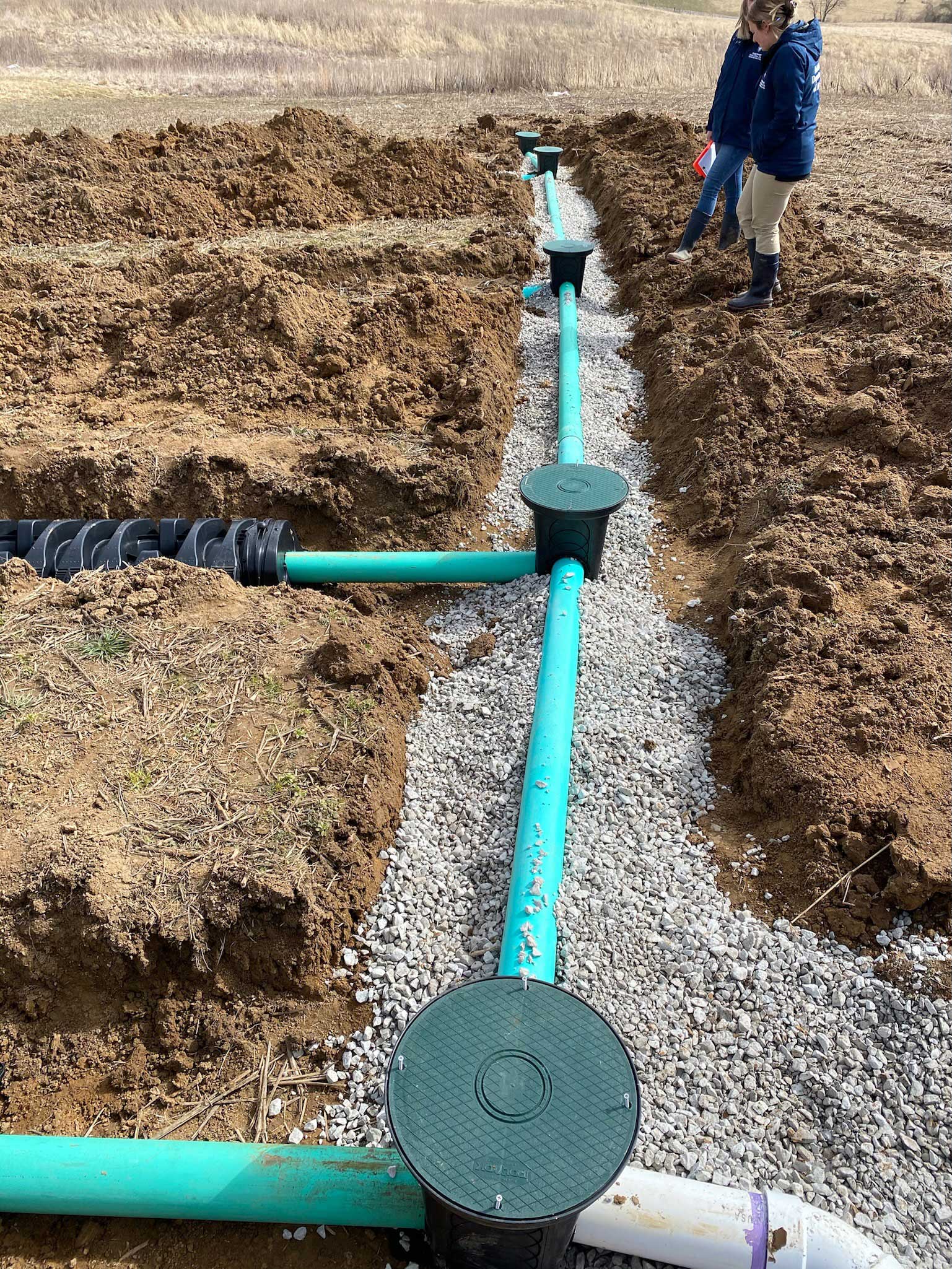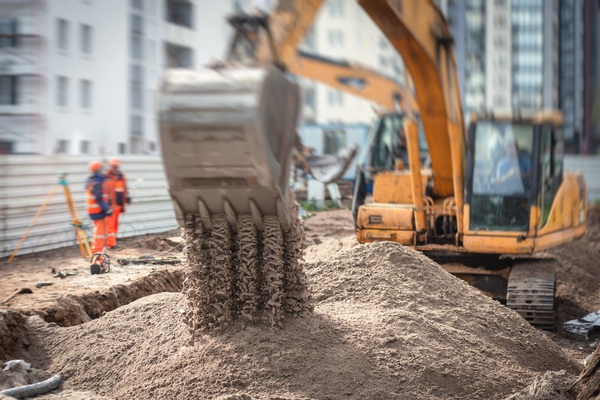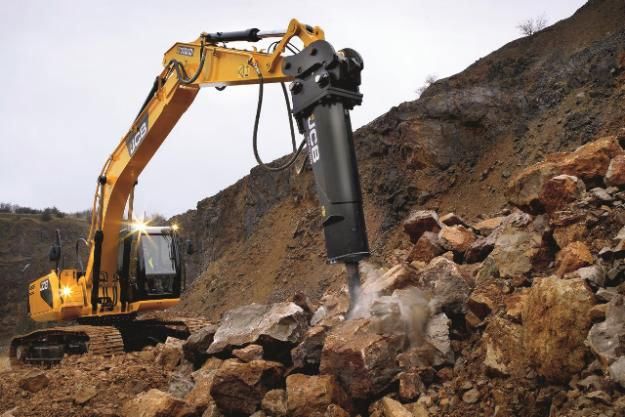Excavating Ohio - Top Excavation Professionals for Ohio Projects
Excavating Ohio - Top Excavation Professionals for Ohio Projects
Blog Article
Introducing the Art of Excavation: Pro Tips for Safe and Productive Excavating
In the world of excavation, the proficiency of risk-free and productive excavating is an art type that needs adherence, understanding, and accuracy to recognized practices. As dirt is transformed and earth is moved, the intricacies of excavation expose themselves, requiring a keen understanding of devices, soil make-up, safety methods, and environmental considerations. The know-how needed to navigate these aspects effectively can indicate the distinction between a successful excavation project and a prospective disaster. By deciphering the layers of this complex procedure, a world of approaches and insights waits for those seeking to raise their excavation abilities to brand-new heights.
Value of Appropriate Devices
To make sure the safety and security and performance of any kind of excavation task, using the proper devices is extremely important. Excavation tasks differ in range and complexity, ranging from little household landscape design jobs to large-scale construction endeavors.
Excavators are basic items of machinery in any kind of excavating operation. These versatile devices can be found in various sizes to fit various task needs. Mini excavators are perfect for smaller jobs, while larger excavators deal with much more comprehensive projects efficiently. Backhoes are an additional essential equipment kind, incorporating the features of a loader and an excavator in one maker. They are useful for tasks requiring versatility and ability to move.
Excavators excel in tasks that need pressing large amounts of soil or particles. By investing in the suitable equipment, excavation tasks can be completed safely, on time, and with accuracy.
Recognizing Dirt Composition
A thorough understanding of soil make-up is basic for executing excavation jobs with accuracy and security. Recognizing the different types of soil is critical as it straight influences excavation methods, equipment option, and total job efficiency.
Silt fragments are smaller than sand but bigger than clay, offering modest drain and cohesion. Organic issue, such as rotting plant material, influences dirt fertility and stability.
Prior to beginning excavation, carrying out dirt examinations to determine its make-up and features is essential. This information aids in picking the proper devices, executing precaution, and establishing excavation approaches tailored to the details soil problems - lancaster excavation. By recognizing soil make-up, excavation experts can enhance job outcomes while making certain security and adherence to ideal practices
Precaution and Protocols
Comprehending soil structure is the cornerstone whereupon security procedures and protocols for excavation projects are developed, ensuring the wellness of employees and the success of the endeavor. When it involves safety throughout excavation, there are several vital steps that have to be carried out to mitigate dangers and protect against accidents.
Firstly, before any kind of excavating starts, a thorough examination of the site should be carried out to recognize any kind of possible risks such as below ground energies, unpredictable soil conditions, or neighboring frameworks that might present a risk. It is essential to have a qualified individual oversee the excavation procedure to make certain that all safety protocols are followed strictly.
Furthermore, all workers associated with the excavation must be correctly learnt risk-free excavating practices and the proper operation of devices. Individual safety equipment (PPE) such as difficult hats, high exposure apparel, gloves, and safety boots ought to be put check out this site on in all times to minimize the risk of injuries. septic ohio. Regular safety meetings and toolbox talks ought to additionally be conducted to keep all see post workers educated concerning possible risks and strengthen secure work practices. By adhering to these precaution and methods, excavation tasks can be finished successfully and without case.
Reliable Excavation Planning
When getting started on an excavation task, meticulous preparation is vital to guarantee performance, security, and effective results. Reliable excavation planning involves a number of crucial actions that are crucial for the smooth execution of the job. The very first step is to perform a detailed site assessment to identify any kind of prospective risks, such as below ground utilities or unstable soil conditions. This info is important for developing a comprehensive excavation strategy that includes precaution and risk reduction techniques.
Once the website analysis is complete, the following action is to create a clear timeline and routine for the excavation tasks. This includes figuring out the sequence of tasks, tools requirements, and workforce appropriation. Appropriate organizing helps prevent hold-ups and ensures that the project remains on track.

In addition, communication among all employee is extremely important throughout the preparation stage. Clear instructions, regular updates, and effective coordination are important for a successful excavation project. By investing effort and time in thorough planning, excavation teams can dramatically boost performance, minimize risks, and achieve successful outcomes.

Handling Ecological Factors To Consider
With increasing focus on environmental sustainability in building methods, taking care of ecological factors to consider has actually come to be an important aspect of excavation projects. Excavation activities have the possible to influence the surrounding atmosphere with dirt disintegration, debris drainage, environment disruption, and contamination of water resources. To minimize these risks, it is important to execute ideal methods that prioritize environmental management.

Moreover, appropriate waste administration is critical to protect against dirt and water contamination. Implementing procedures for the disposal of hazardous products, recycling of waste products, and reducing the use of damaging chemicals can substantially minimize the environmental effect of excavation jobs. By integrating these methods into excavation planning and implementation, building and construction firms can make certain that their jobs are not just risk-free and productive but also eco liable.
Final Thought
To conclude, grasping the art of excavation needs a detailed understanding of correct devices, soil composition, precaution, and reliable planning. By following these standards and thinking about ecological variables, excavations can be conducted securely and effectively. It is critical to prioritize safety and performance in every digging project to make certain successful outcomes.
As dirt is turned and earth is moved, the details of excavation expose themselves, demanding an eager understanding of equipment, dirt composition, safety and security procedures, and ecological considerations.To make certain the safety and security and efficiency of any kind of excavation job, making use of the suitable equipment is extremely important.A thorough understanding of soil make-up is essential for executing excavation jobs with accuracy and security. Recognizing the different types of dirt is vital as it straight affects excavation approaches, equipment choice, and overall job performance. By understanding soil structure, excavation specialists can enhance job results while ensuring security and adherence to ideal practices.
Report this page